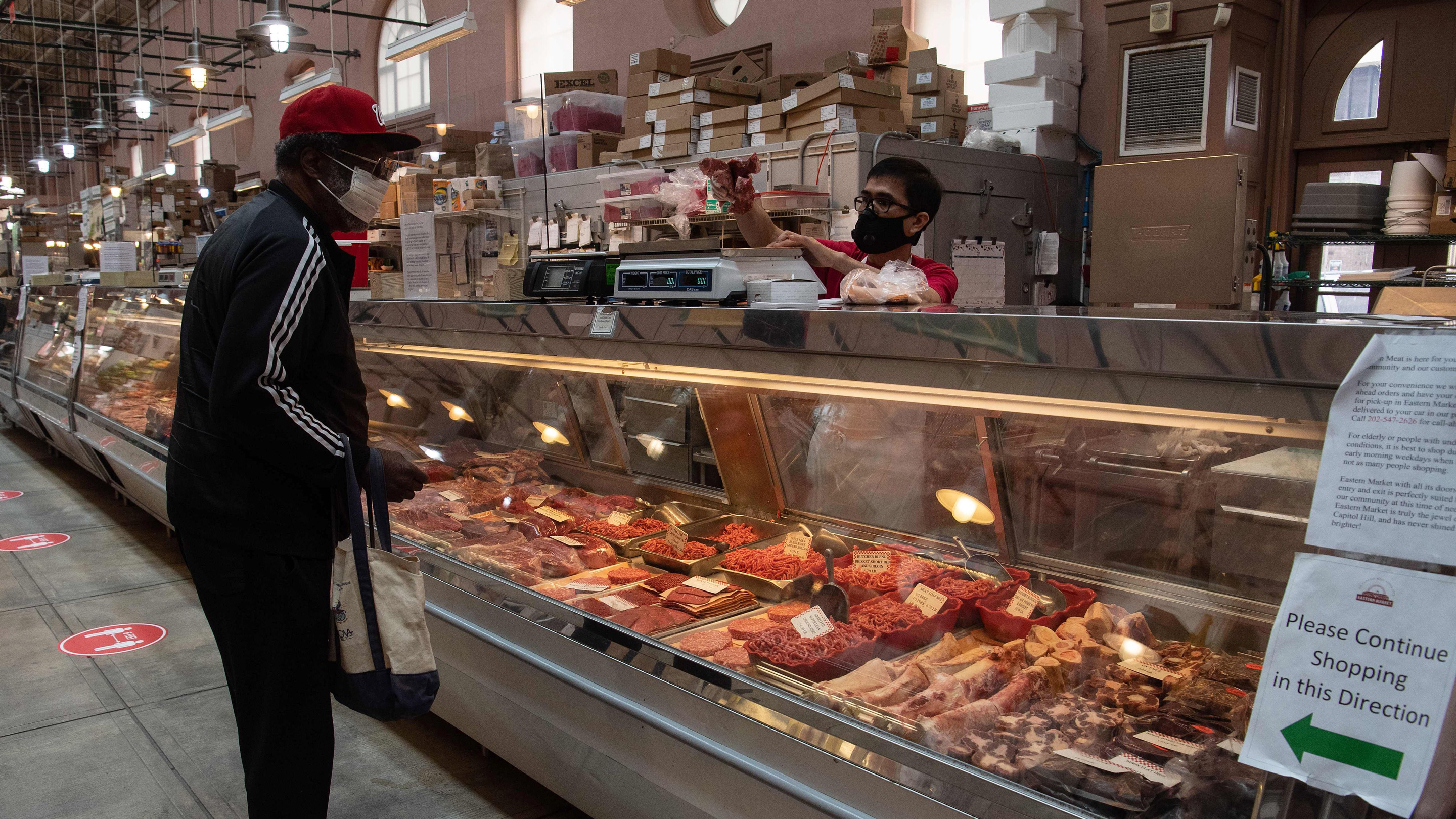Why Locals Love Bagley Farms Meat Market Edwardsville IL for Their Meat Shopping
Why Locals Love Bagley Farms Meat Market Edwardsville IL for Their Meat Shopping
Blog Article
Uncover the Art of the Butcher's Cut in a Modern Meat Market
In the ever-evolving landscape of modern meat markets, the butcher's cut has actually transcended its typical origins, combining old-time craftsmanship with contemporary methods. Today's butchers are not simply cpus of meat; they are well-informed craftsmens that stress sustainability and moral sourcing. Their experience in choose and preparing cuts customized to particular cooking needs offers an unparalleled eating experience. Yet, what genuinely establishes the modern butcher apart is their ability to create a much deeper link between customers and the beginnings of their meat. Exactly how do these masters equilibrium tradition with advancement, and what ramifications does this have for the future of meat usage?
Advancement of Butchery Methods
The development of butchery methods mirrors an abundant tapestry of technology and adjustment driven by improvements in modern technology, modifications in customer demand, and a deeper understanding of meat scientific research. Historically, butchery was a craft gave with generations, with techniques honed over centuries to make best use of return and flavor. Nevertheless, the commercial change ushered in mechanization, changing typical practices and allowing large processing.
The mid-20th century saw butchery techniques additionally improved by scientific insights into muscle biology and meat aging, improving both inflammation and preference. Innovations like vacuum packaging and refrigeration prolonged item shelf-life, permitting butchers to branch out offerings and boost top quality control. This duration also noted the surge of customized devices, such as band saws and meat slicers, which raised accuracy and performance in meat handling.

The 21st century has actually introduced digital technology into the butchery realm. Digital systems currently help in tracking animal provenance and optimizing cuts to fulfill details customer preferences. In addition, a rebirth in artisanal butchery has actually arised, blending conventional skills with modern-day expertise to deal with consumers looking for moral and sustainable meat choices. This development highlights a dynamic interaction between tradition and technology, conference contemporary demands while preserving the craft's heritage.
Comprehending Meat Cuts
Understanding the ins and outs of meat cuts is important for both butchers and customers seeking top quality and value. Each cut originates from a different component of the pet, passing on one-of-a-kind flavors, appearances, and cooking approaches - bagley farms meat market edwardsville il. Mastery of these differences not just boosts culinary experiences yet also makes the most of the energy of each carcass. For butchers, precise cuts show ability and respect for the craft, guaranteeing marginal waste and optimal yield.

Understanding muscular tissue structure is essential; muscles made use of much more frequently by the pet have a tendency to be harder and are best fit for slow food preparation techniques, while less-used muscular tissues, like those discovered in the more helpful hints loin, are more tender and ideal for cooking or roasting. Experience with these distinctions equips consumers to make educated choices, improving their culinary endeavors.
Picking Quality Meat
Choosing the ideal meat entails even more than just choosing an aesthetically enticing item from the display. The art of selecting high quality meat needs a critical eye and understanding of specific characteristics that symbolize quality and quality.
Second of all, take into consideration the marbling, which refers to the white flecks of fat within the muscular tissue. Proper marbling is an essential sign of tenderness and flavor, as it melts during cooking, improving the meat's juiciness. Bear in mind, greater marbling commonly correlates with premium quality cuts, such as USDA Prime.
Structure is our website one more important factor; meat should feel solid to the touch, not slimed or extremely soft. In addition, bear in mind the scent. Fresh meat should have a clean, neutral smell, without any sour or repulsive smells.
Coupling Cuts With Food Preparation Methods

Alternatively, tougher cuts like brisket and chuck roast are abundant in collagen, which damages down into gelatin when cooked slowly. These cuts are suitable for braising or slow-moving roasting, allowing the meat to tenderize in time and develop deep, intricate flavors. In a similar way, cuts such as short ribs and pork shoulder prosper with slow-cooking approaches, where expanded cooking times change their robust appearances into delicious meals.
Lamb shanks and oxtail, which require extended food preparation to soften, are best prospects for stewing or sluggish simmering. These approaches coax out rich, passionate tastes while maintaining moisture. By comprehending the special qualities of each cut, chefs and home chefs alike can raise their cooking developments, making certain each meal is both satisfying and memorable.
The Butcher's Role Today
Navigating the advancing landscape of the modern meat market, the butcher's duty today extends past plain preparation of cuts. Contemporary butchers are cooking artisans, teachers, and supporters for sustainable methods.
Along with crafting precise cuts, butchers now involve straight with customers, supplying cooking advice and tailoring options to suit private demands and choices. Their expertise in meat aging, marbling, and flavor accounts equips consumers to make informed choices, boosting their cooking experiences. This customized solution exhibits the butcher's advancing role as a trusted consultant in the cooking area.
Moreover, butchers are critical in decreasing waste, utilizing whole animals to produce diverse items such as sausages and supplies. This thorough strategy why not check here not only values the animal but likewise lines up with contemporary sustainability goals. By doing this, the modern-day butcher personifies both practice and innovation, adjusting to an ever-changing market while protecting the virtuosity and honesty of their craft.
Verdict
Proficiency in understanding diverse meat cuts and high quality signs equips butchers to provide informed recommendations, aligning certain cuts with ideal cooking methods. By honoring historical methods while embracing contemporary needs, the butcher's role stays vital in today's innovative meat market.
Report this page